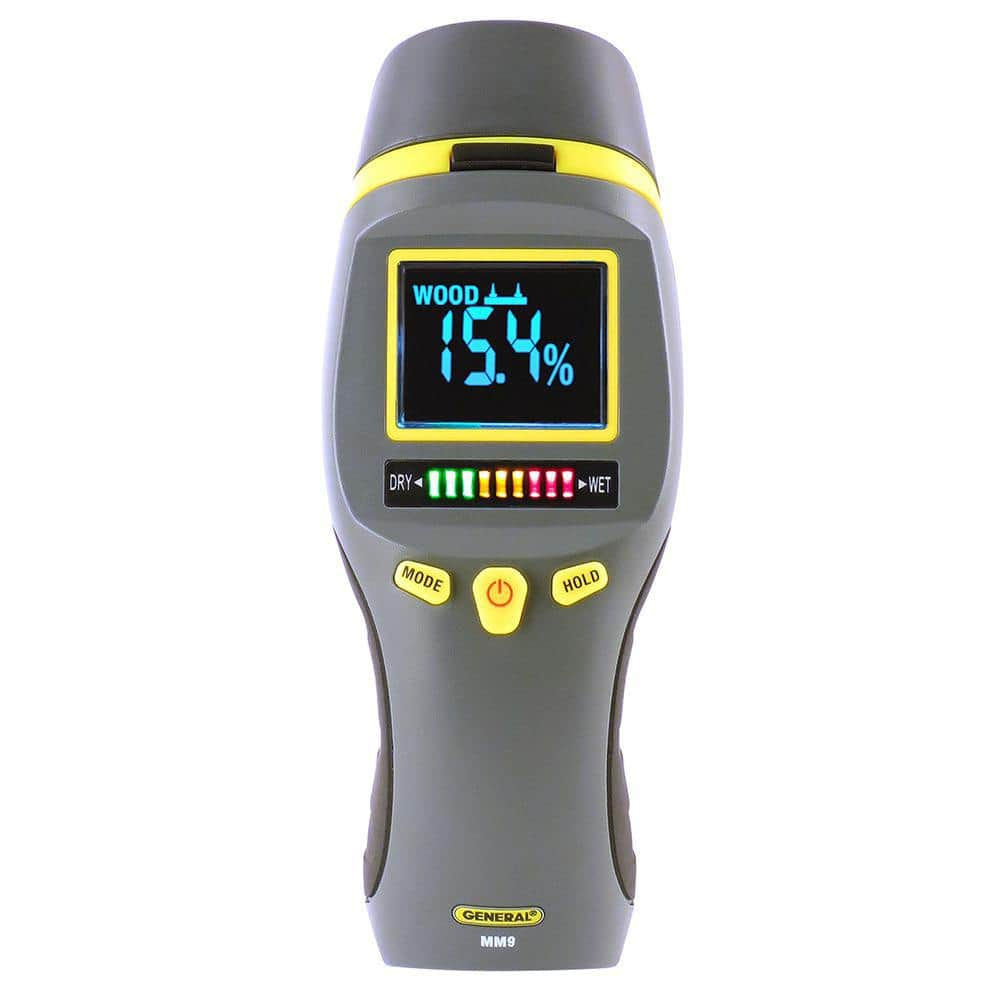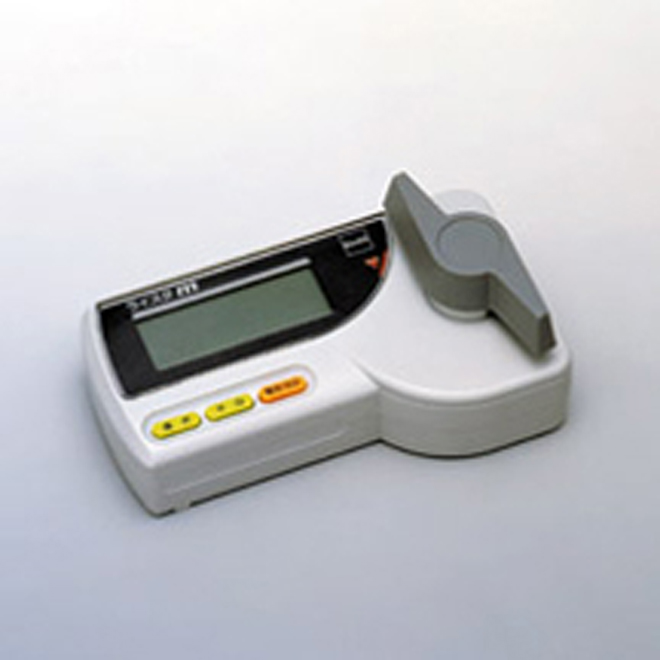Moisture Meter Reviews: Comparing the most effective Models for Specialist and DIY Usage
Moisture Meter Reviews: Comparing the most effective Models for Specialist and DIY Usage
Blog Article
Explore the World of Wetness Meters: Every Little Thing You Need to Know
In the realm of moisture meters lies a world of precision and usefulness that typically goes undetected. These tools, while seemingly straightforward, hold a wealth of information that can significantly affect different sectors and applications. Comprehending exactly how moisture meters run, the different types offered, and their diverse usages can clarify their significance in making sure high quality and performance. By discovering the ins and outs of moisture meters, one can reveal an important tool that goes beyond plain measurement, using understandings that can make a considerable distinction in numerous fields.
How Dampness Meters Job
Dampness meters operate by gauging the electric conductivity or capacitance of products to establish the dampness web content existing - Moisture Meter. These meters are very useful tools throughout numerous markets, consisting of agriculture, woodworking, and building and construction. By using different approaches such as pinless or pin-type innovation, dampness meters offer exact analyses that aid professionals make notified choices
Pin-type wetness meters function by putting the sharp pins right into the material being tested. The electrical conductivity in between the pins is after that gauged, with greater wetness degrees leading to boosted conductivity. On the other hand, pinless dampness meters make use of electro-magnetic signals to scan a bigger area without triggering any type of damage to the product's surface. These meters are ideal for promptly analyzing wetness degrees in big locations or completed products.
Despite the method utilized, wetness meters play a critical function in avoiding problems such as mold growth, architectural damages, or item problems triggered by excess dampness. Comprehending just how these meters work is crucial for making certain the high quality and stability of products in various applications.
Types of Moisture Meters
Given the critical duty dampness meters play in numerous sectors, it is important to recognize the different types offered to experts for accurately analyzing dampness levels. There are largely 2 main kinds of wetness meters: pin-type and pinless wetness meters.
Pin-type dampness meters utilize two pins that are inserted into the material being tested to measure the electric resistance in between them. This method is frequently utilized for wood, drywall, and other building products. Pin-type meters provide precise readings at certain depths, making them ideal for identifying wetness slopes.
On the various other hand, pinless dampness meters utilize electromagnetic sensing unit plates to scan a bigger area of the product without creating any type of damage. This kind appropriates for rapidly scanning large locations and is frequently utilized for floor covering, wall surfaces, and ceilings. Pinless meters are practical for taking analyses on completed surface areas without leaving any kind of noticeable marks.
Both types of wetness meters have their advantages and are chosen based upon the details requirements of the task available. Recognizing the distinctions in between these kinds is critical for professionals to make accurate dampness analyses.
Applications Throughout Industries
With diverse performances, dampness meters discover prevalent application throughout numerous industries, assisting experts in making sure optimal conditions for structures and materials. In the farming field, dampness meters are very useful for figuring out the dampness content in grains, seeds, and hay, ensuring top quality control and stopping mold and mildew growth. Building experts depend on dampness meters to evaluate click to read more the moisture degrees in structure materials like timber, concrete, and drywall, which is vital for keeping structural stability and stopping issues like rot or mold and mildew. The floor covering market makes use of moisture meters to measure the wetness content in subfloors before setting up numerous floor treatments, stopping costly problems due to excess moisture. In addition, in the food market, dampness meters are made use of to keep an eye on and manage moisture levels in items such as grains, nuts, and dried out fruits to keep quality and high quality. Furthermore, moisture meters play a vital function in the repair and damage control sector by helping professionals attend to and recognize water damage in buildings without delay. Throughout these varied sectors, dampness meters are important devices for ensuring the high quality, safety, and durability of different products and products.
Tips for Utilizing Moisture Meters
Make use of the dampness meter's calibration setups to ensure accurate analyses when measuring the dampness web content in numerous materials. Calibration is critical for the appropriate performance of a moisture meter. Prior to each use, it is advisable to inspect and readjust the calibration settings according to the certain product being examined. Additionally, ensure the meter is readied to the appropriate wetness variety for the material you are measuring to obtain one of the most specific outcomes.

When using a pin-type wetness meter, place the pins to the suitable depth recommended for the material being checked. This makes sure that the wetness readings are drawn from the appropriate depth within the material, providing an extra exact depiction of its wetness get more material. For pinless wetness meters, keep in mind to maintain proper call with the product's surface to get dependable readings.

Routinely examine and change the batteries in your wetness meter to avoid imprecise analyses due to reduced power. When not in use to lengthen its life expectancy and keep its accuracy, Shop the meter in a safe and completely dry area. By complying with these tips, you can maximize the efficiency of your dampness meter and obtain specific moisture material dimensions across various products.

Upkeep and Calibration
To make certain the precision of wetness material dimensions, regular upkeep and calibration of the dampness meter are important steps in its correct performance. Calibration adjusts the moisture meter to ensure that it offers constant and trusted outcomes.
Calibration ought to be performed regularly, particularly if the moisture meter is made use of frequently or in critical applications where precise measurements are required. Numerous dampness meters include calibration tools or can be adjusted by specialist solutions - Moisture Meter. It is suggested to keep a log of calibration days and results to track the performance of the wetness meter gradually. By keeping and calibrating the wetness meter routinely, individuals can trust the accuracy of the dampness content measurements acquired.
Conclusion
Finally, wetness meters play a critical function in various markets by properly you could try these out gauging the wetness material of materials. Recognizing just how these tools function, the different kinds offered, and appropriate maintenance and calibration are necessary for acquiring dependable results. Whether in building, farming, or manufacturing, using dampness meters aids guarantee quality assurance and performance in processes.
Building professionals count on dampness meters to examine the dampness levels in building materials like timber, drywall, and concrete, which is essential for keeping structural honesty and stopping problems like rot or mold. The flooring market makes use of moisture meters to measure the moisture material in subfloors before mounting various floor coverings, avoiding expensive damages due to excess wetness.Utilize the dampness meter's calibration setups to make sure accurate analyses when gauging the moisture material in numerous products. By complying with these tips, you can make the most of the efficiency of your wetness meter and get specific wetness material measurements across various products.
In conclusion, moisture meters play a crucial duty in different markets by precisely measuring the moisture material of materials.
Report this page